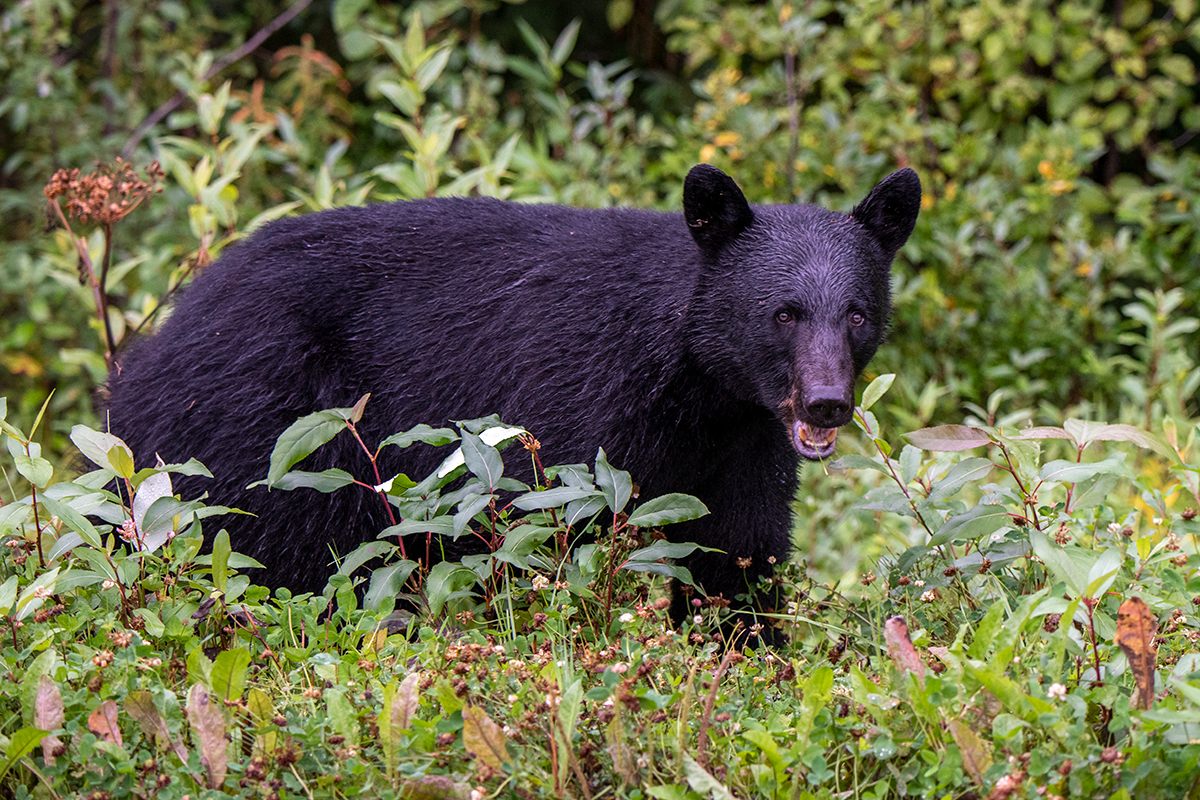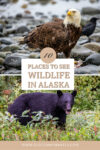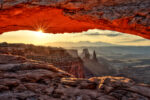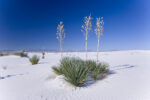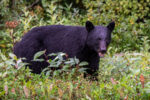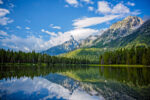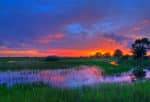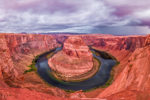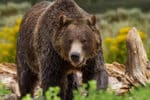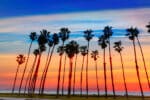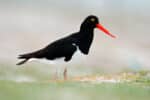Dreaming of an unforgettable Alaskan adventure filled with stunning landscapes and majestic wildlife? You’re in luck! Welcome to your go-to guide for the best places to see wildlife in Alaska. We’ve roamed these awe-inspiring terrains, camera in hand, and can’t wait to share our expert insights with you.
Are you looking to catch a glimpse of grizzly bears, humpback whales, bald eagles, or maybe even a moose? We’re not just tossing out names of places; these are spots we’ve actually visited, animals we’ve really seen, and moments we hold dear. Trust us, you’re in for a treat!
So, let’s dive into the ultimate guide to wildlife viewing in Alaska. Ready to get wild?
Why Alaska is a Wildlife Paradise?
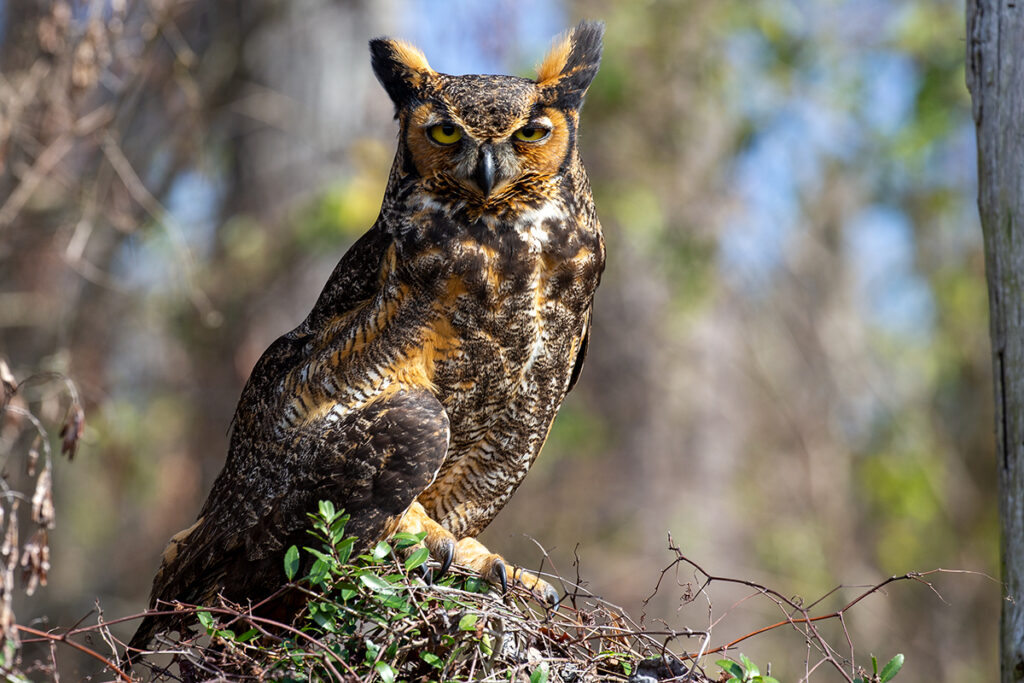
Let’s get straight to the point: Alaska is an outstanding safari destination, a wildlife enthusiast’s dream come true. Why? Here are the facts.
Size Matters: Alaska takes the crown as the biggest state in the U.S., twice the size of Texas, offering endless expanses of wilderness. But it’s also the least crowded place in the U.S., with just around 731,000 people calling it home. That means there’s a lot of room for wildlife to roam freely.
Minimal Human Impact: About 65% of Alaska is federally owned public land, including 8 Alaskan national parks, state parks, and wildlife refuges. Plus, the Last Frontier state has over 100,000 glaciers. This means less human interference and more natural habitats for animals.
Marine Life Galore: Alaska has over 44,000 miles of coastline. That’s more than all other U.S. states combined! It’s a paradise for marine life. Alaska’s waters are teeming with life, from humpback whales to orcas and seals, not to mention a whopping 400-plus fish species. That is why cruising is one of the best ways to see Alaska.
Birdwatcher’s Paradise: With over 500 species of birds migrating through Alaska at different times of the year, it’s a birdwatcher’s haven. From bald eagles and great grey owls to puffins.
Data-Backed: According to the Alaska Department of Fish and Game, the state is home to 175,000 to 200,000 moose, 100,000 black bears, and up to 35,000 brown bears. That’s a lot of opportunities for wildlife viewing.
Alaska is the place to be if you want to experience wildlife in its most natural setting. It’s not just a state; it’s a wildlife paradise. So, where should you go for the best wildlife viewing in Alaska? Stay tuned to find out.
The 10 Top Places to See Wildlife in Alaska
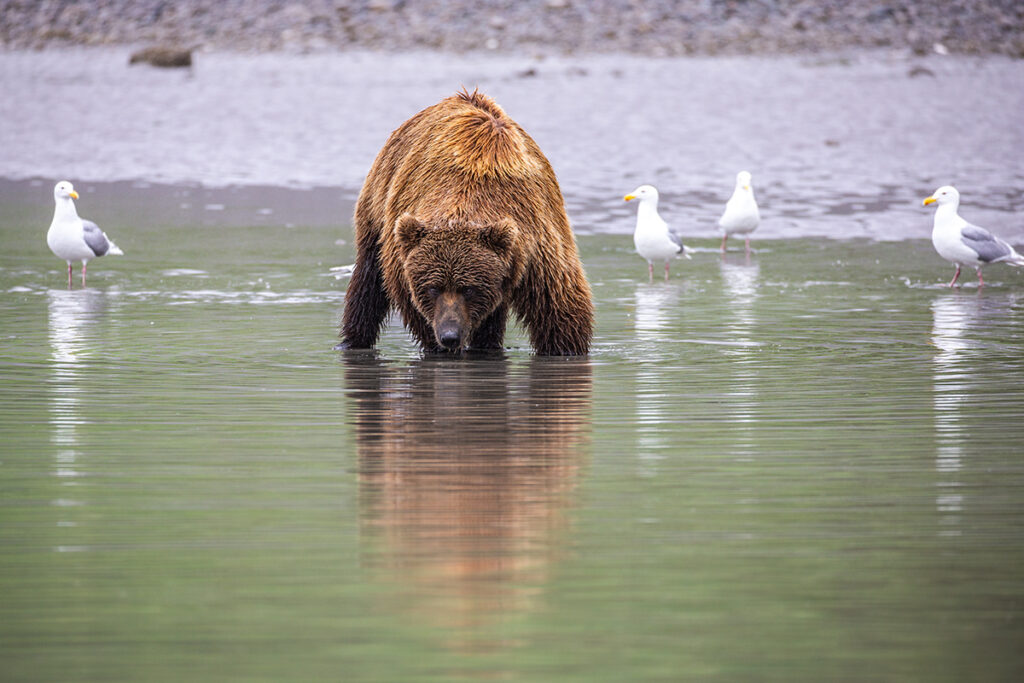
Alaska is a treasure trove when it comes to wildlife viewing destinations. Each location offers a unique set of animals to observe, from the rugged coastlines to the sprawling tundras.
Given Alaska’s immense size and varied landscapes, covering all these incredible spots in one journey is a tall order. We’ve ventured both by land and sea multiple times to explore these destinations. In this guide, we’ve included a mix of easily reachable locations and some off-the-beaten-path spots that demand more planning.
Here are some top spots you won’t want to miss if you are a wildlife-viewing enthusiast.
Denali National Park: A Wildlife Wonderland
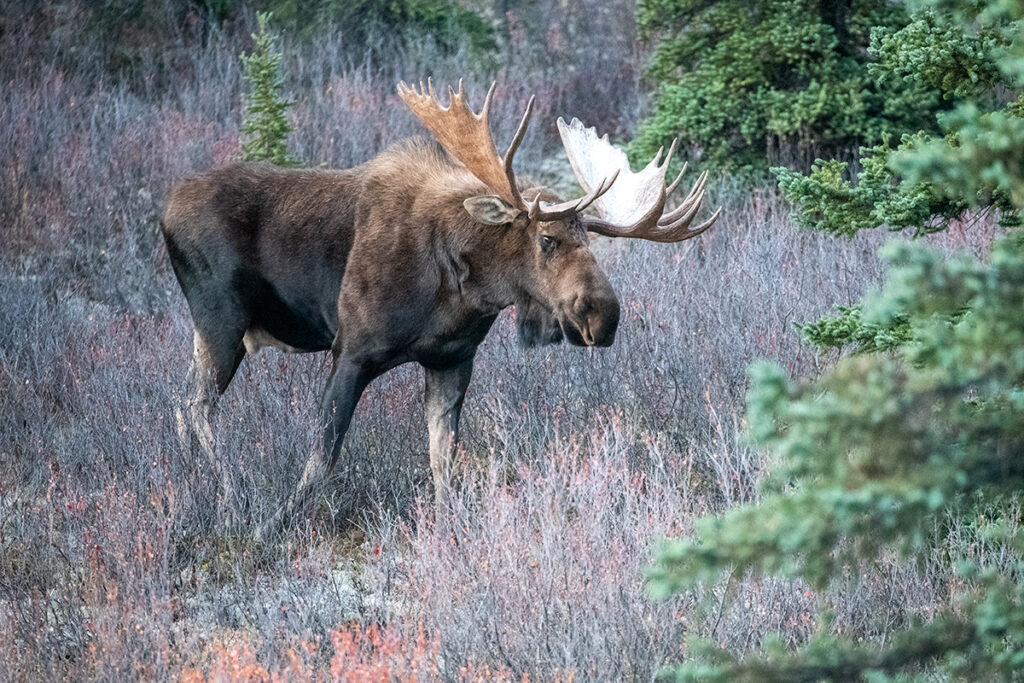
Wildlife viewing in Denali National Park is an enthusiast’s dream. Spanning over 6 million acres, this park serves as a sanctuary for Alaska’s “Big Five”—moose, caribou, Dall sheep, wolves, and grizzly bears. You’ll often find moose near water bodies while caribou freely roam the tundra.
Dall sheep favor the steep terrains, and if you’re lucky, you might even catch a glimpse of elusive wolves during dawn or dusk. We have been to this park several times but have not been lucky enough to see a wolf. Grizzly bears? You’ll spot them foraging in open fields.
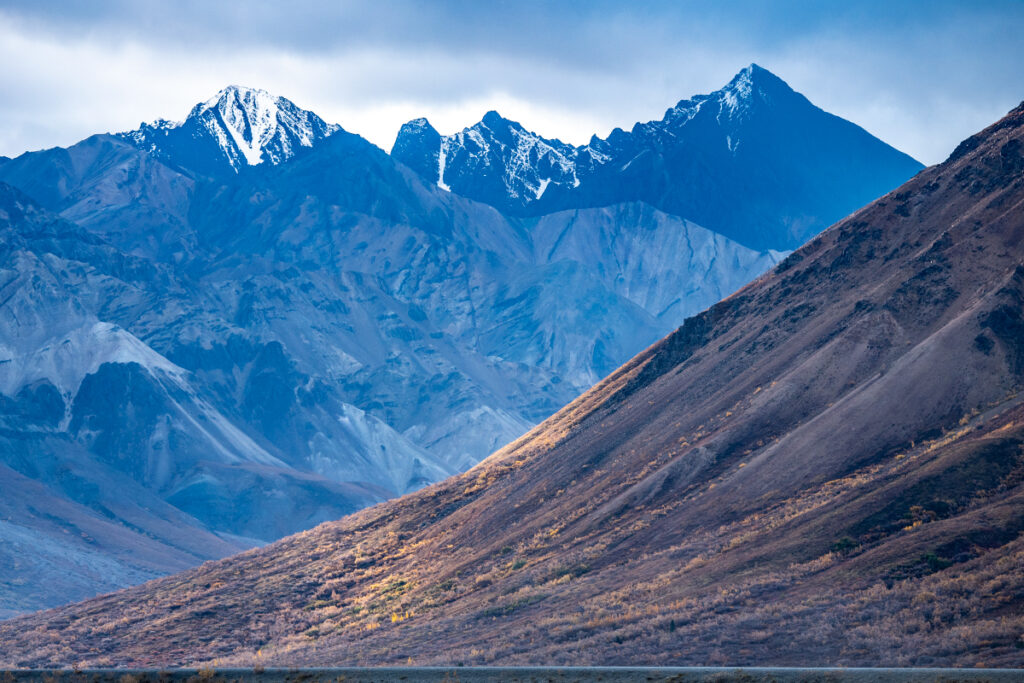
When’s the best time to visit? Aim for late May to early September. These months offer the most accessible wildlife viewing opportunities, and the only road in the park is open during this time for tourists.
Reaching Denali National Park is a breeze, given that it’s one of only three Alaskan parks you can drive to. Take the Parks Highway (Alaska Route 3), and you’ll find yourself in Denali, about 4 hours from Anchorage.
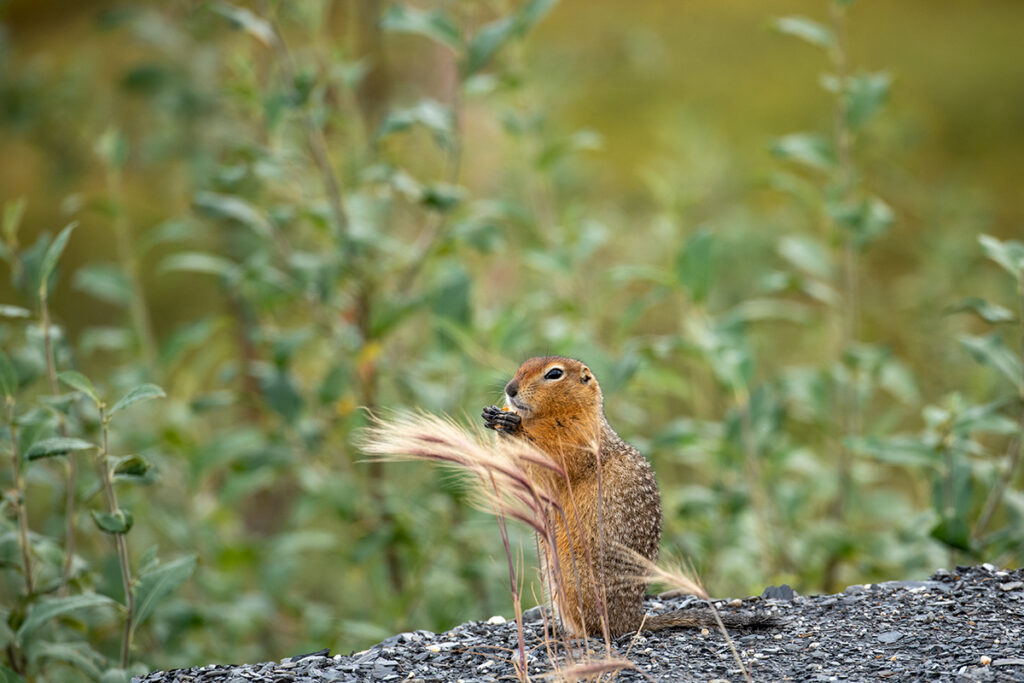
While you can roam independently, a guided tour offers a more organized experience. Remember that only buses are allowed past Mile 15 on the park’s lone road, so personal cars are a no-go from that point. That is why tour buses are the best for exploring and wildlife viewing.
As for lodging, you have options ranging from simple campgrounds inside the park to cozy lodges in McKinley Park near the park entrance. Check Grande Denali Lodge or if you don’t mind staying out of town, consider Denali Primrose B&B.
Glacier Bay National Park: A Frozen Wonderland Teeming with Wildlife
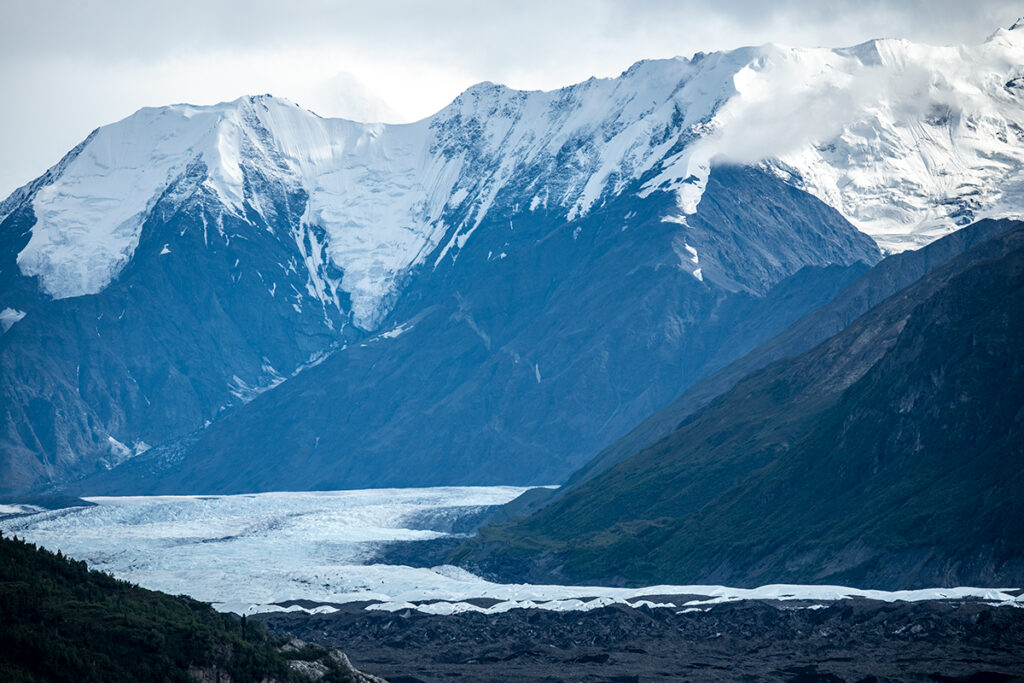
Don’t let the icy landscapes fool you; Glacier Bay National Park is a hot spot for Alaska wildlife viewing. Located in the southeastern part of the state, this park is a sanctuary for a variety of marine and terrestrial animals. From humpback whales and orcas to mountain goats, the diversity is astounding.
To fully experience Glacier Bay, you have two excellent options. You can catch a flight to Gustavus, the gateway to the park, for a more direct route. Alternatively, consider embarking on an Alaska Inside Passage cruise that features Glacier Bay in its itinerary. This cruise option offers a leisurely and scenic approach, allowing you to soak in the majestic landscapes even before you set foot in the park. Both options have their unique charms, so choose based on what suits your travel style best.
Once you’re in the park, guided boat tours are the most popular way to explore the glaciers and spot wildlife. For the more adventurous, kayaking offers a closer look at the park’s natural wonders.
The best time to visit for wildlife viewing is during the summer months, from June to August. During this period, you’ll likely spot humpback whales feeding in the nutrient-rich waters and seals lounging on ice floes. On land, keep an eye out for brown bears, especially near streams filled with salmon.
The Glacier Bay Lodge offers comfortable rooms and easy access to daily boat tours if you’re planning an extended stay. Camping is also available within the park for those who prefer a more rustic experience.
Kenai Fjords National Park: A Marine Wonderland
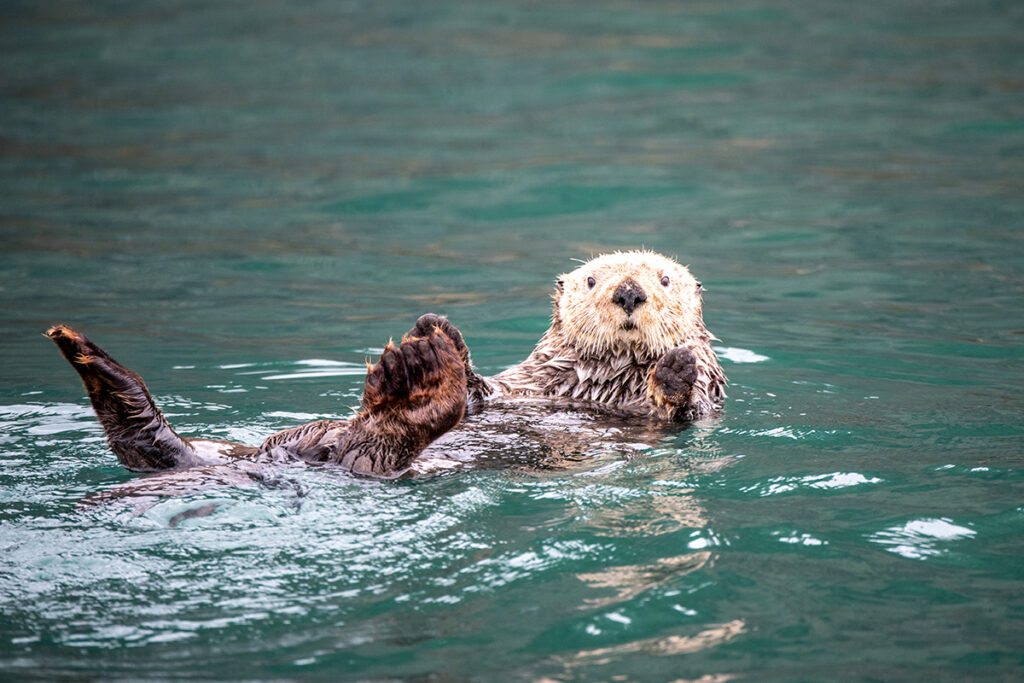
If you’re a fan of marine wildlife, Kenai Fjords National Park is your dream come true. Located just outside the charming town of Seward, this park is a haven for sea otters, seals, and a variety of whale species, making it one of the best places to see wildlife in Alaska.
The park’s icy waters are teeming with life, from humpback whales to orcas. Don’t forget the puffins and eagles that dominate the sky, making for a complete wildlife experience.
Late spring to early fall is ideal for wildlife viewing. May through September offers the best weather and sea conditions for boat tours, the primary way to explore the park.
A scenic 3-hour drive from Anchorage will bring you to Seward, the gateway to Kenai Fjords. Once there, boat tours are the most popular and effective way to experience the park’s marine life. Dress warmly and in layers, as the weather can be unpredictable. Also, if you’re prone to seasickness, consider taking medication before embarking on a boat tour.
Seward offers a range of accommodations, but two stand out for their convenience and amenities. The Harbor 360 Hotel offers stunning harbor views and is close to the departure points for boat tours. Another option is the Seward Windsong Lodge, set in a tranquil forested area, offering a peaceful retreat after a day of wildlife viewing.
Katmai National Park: Where Bears Catch Salmon by the Hundreds
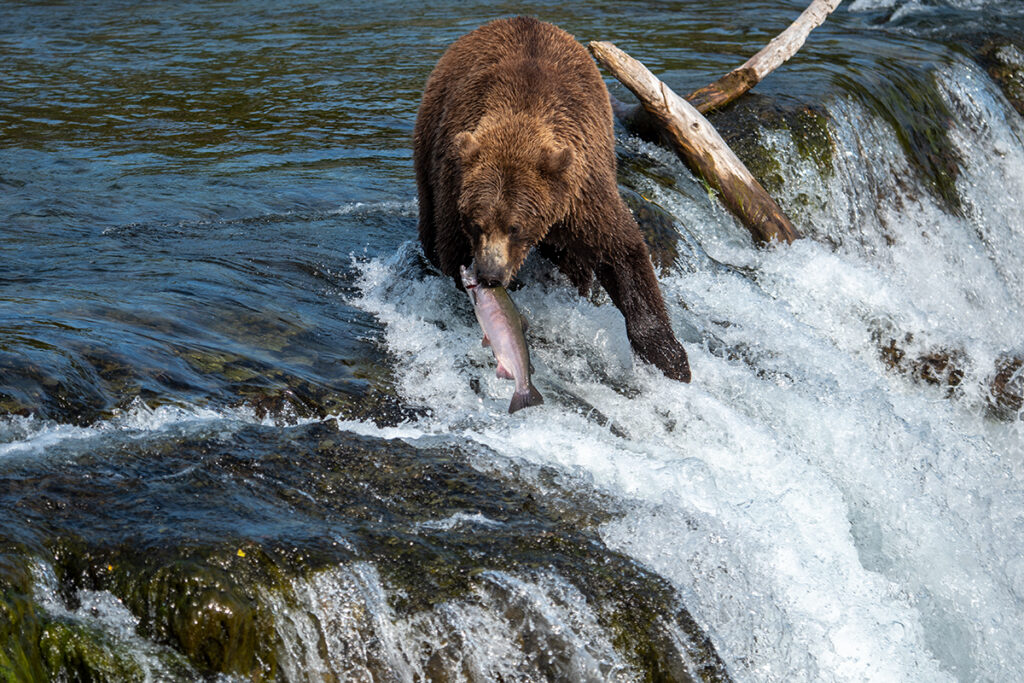
If you’re searching for the best places to see wildlife in Alaska, Katmai National Park should be at the top of your list. This park is a haven for brown bears, with an estimated population of over 2,200. During the peak salmon run between July and September, you can see bears skillfully catching salmon at Brooks Falls.
Getting to Katmai is most commonly done via flights from Homer, Anchorage, or King Salmon. Once you land, you have a couple of options for exploring the park. Guided tours offer a structured and informative experience, but for those who prefer a self-guided adventure, designated viewing platforms are available for safe bear-watching.
Accommodation can be a bit tricky; Brooks Lodge operates on a lottery system, making it a less reliable option for lodging. Your best bet would be to either camp at the park’s campground or opt for a one-day plane trip for your wildlife viewing.
The ideal time for bear-watching aligns with the salmon run, from late June to mid-July. However, the park is a year-round destination offering sightings of other wildlife like wolves, moose, and various bird species.
Lake Clark National Park: A Premier Destination for Alaska Wildlife Viewing
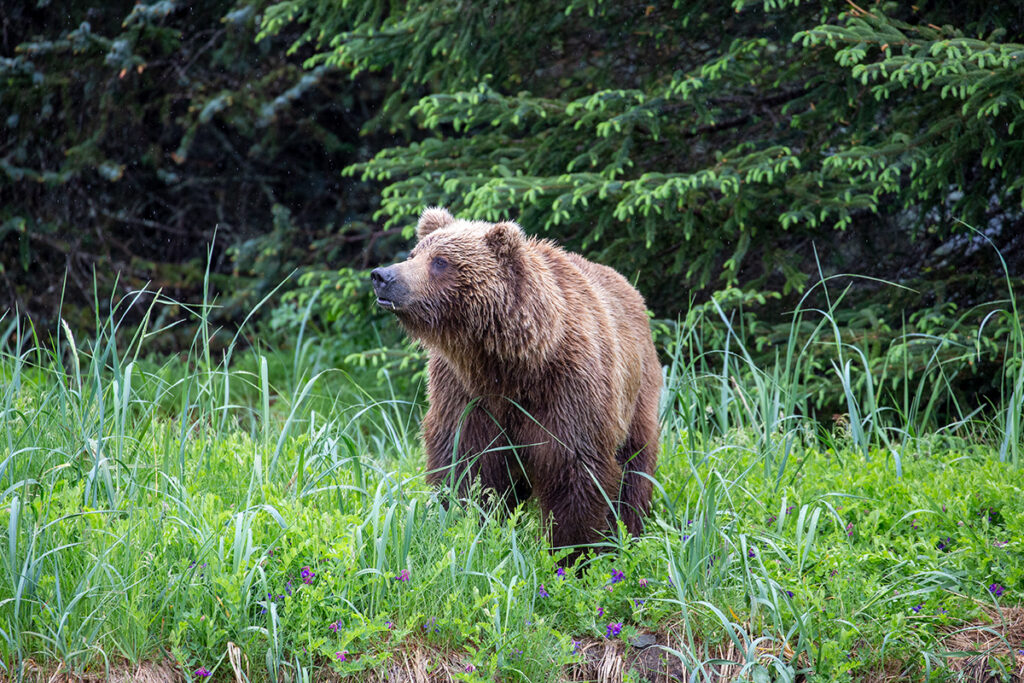
Lake Clark National Park offers an unparalleled wildlife experience, especially if you’re keen on bear-watching. This remote park is accessible only by boat or small aircraft, making it a less crowded but equally stunning alternative for wildlife viewing in Alaska. From the lush forests to the serene lakes, the park is a haven for various species, including brown bears, moose, and bald eagles.
Lake Clark bear viewing is particularly popular between June and September when the salmon run attracts a large number of brown bears. You can either opt for a guided tour or explore the park independently, depending on your comfort level with the wilderness.
Getting to Lake Clark involves a short flight from Anchorage to Port Alsworth, the park’s main visitor center. Accommodations are limited but cozy, with options like The Farm Lodge offering a rustic yet comfortable stay.
By visiting Lake Clark National Park, you’re signing up for one of the best places to see wildlife in Alaska, away from the crowds and closer to nature. The park can be a great alternative to bear watching in Katmai National Park, which has recently been a bit crowded.
Juneau: A Whale-Watching Haven in Alaska’s Inside Passage
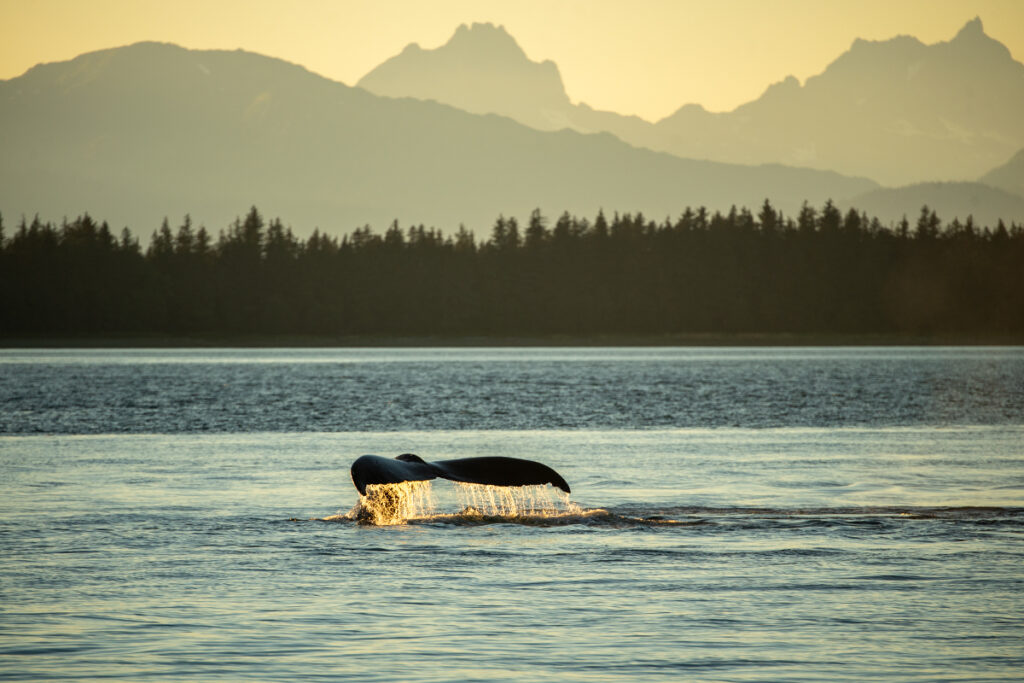
Regarding Alaska wildlife viewing, don’t overlook Juneau, the state’s capital. Nestled in the stunning Alaska Inside Passage, Juneau offers prime whale-watching spots in Alaska. From May to September, humpback whales and orcas frequent the waters, offering an unforgettable spectacle.
Getting to Juneau is relatively easy, with direct flights from major cities like Seattle. Additionally, Alaska cruises are a popular way to reach Juneau while enjoying scenic views along the way. Once you’re there, you can opt for a guided whale-watching tour, which often includes other wildlife sightings like seals and sea lions. For a more independent experience, you can rent a kayak and explore the waters at your own pace.
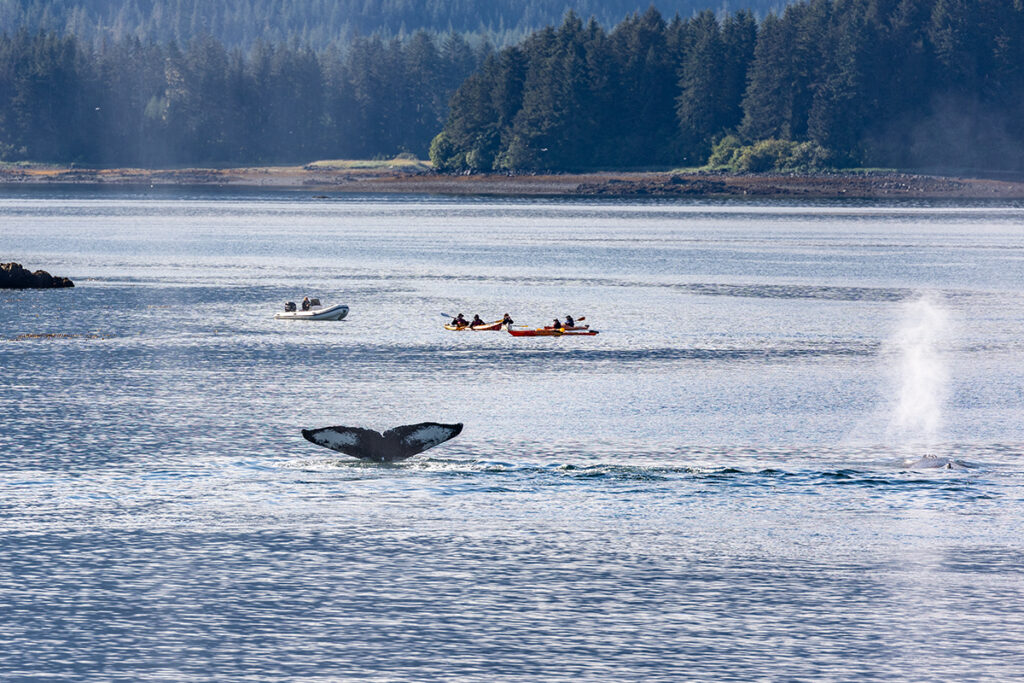
The best time for whale-watching is from late spring to early fall. Consider booking a room at the Four Points by Sheraton or the Silverbow Inn, offering comfortable accommodations and easy access to wildlife tours.
Juneau isn’t just about the sea; the nearby forests are home to black bears and bald eagles. A visit to the Mendenhall Glacier also offers the chance to see mountain goats and beavers. So, whether you’re on the water or on land, Juneau is a wildlife enthusiast’s dream come true.
Homer Spit: A Hidden Gem for Alaska Wildlife Viewing
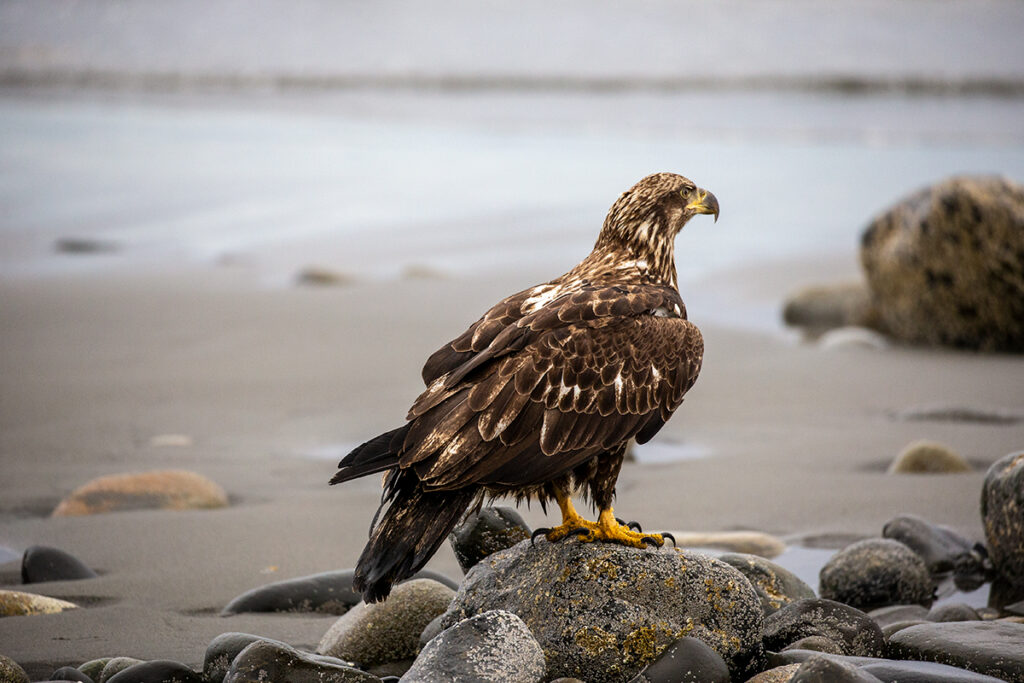
While national parks often steal the spotlight when it comes to wildlife viewing in Alaska, there are other equally captivating spots. One such gem is Homer Spit, a 4.5-mile-long finger of land jutting out into Kachemak Bay.
Homer Spit is a haven for birdwatchers and marine life enthusiasts. One of the best things to do in Homer is to keep an eye out for bald eagles, especially at nearby Anchor Point. The area is teeming with these majestic birds, making it one of Alaska’s best places to see wildlife. You can also spot sea otters, seals, and even whales from the shore or take a boat tour.
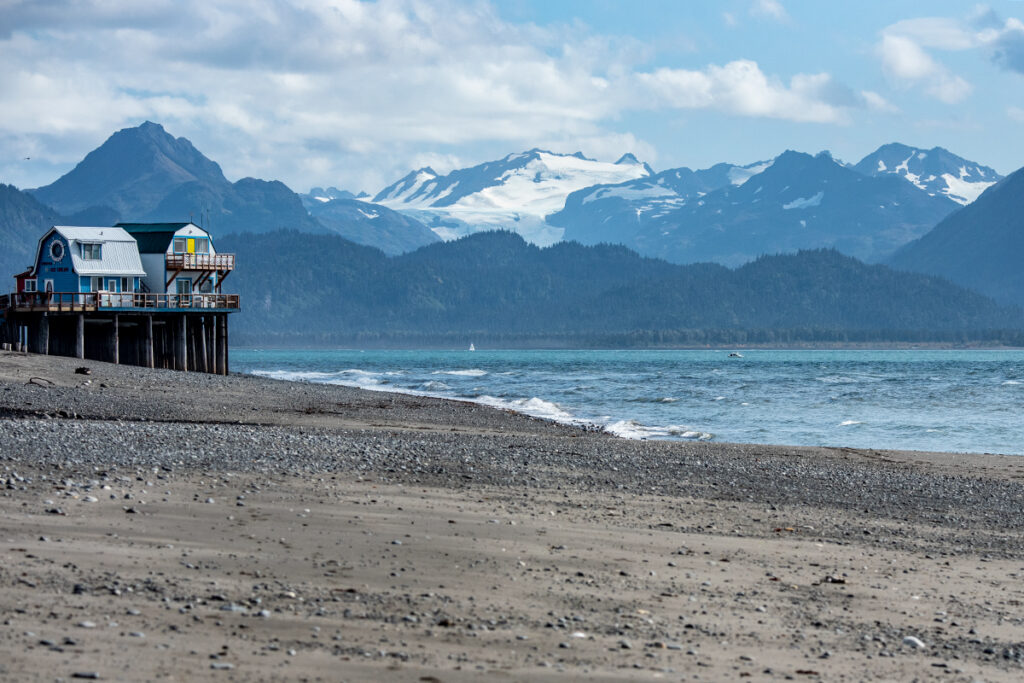
Getting to Homer Spit is easy; it’s about a 4-hour drive from Anchorage along the scenic Sterling Highway. Once there, you can explore the area independently or join one of the many guided tours available.
For accommodations, consider staying at Land’s End Resort for stunning views of the bay or the Driftwood Inn for a more budget-friendly option. Both are conveniently located, offering easy access to wildlife viewing spots and other local attractions. Don’t miss out on the fresh and delicious halibut and oysters when you’re in Homer.
Chilkat Bald Eagle Preserve: A Feathered Spectacle
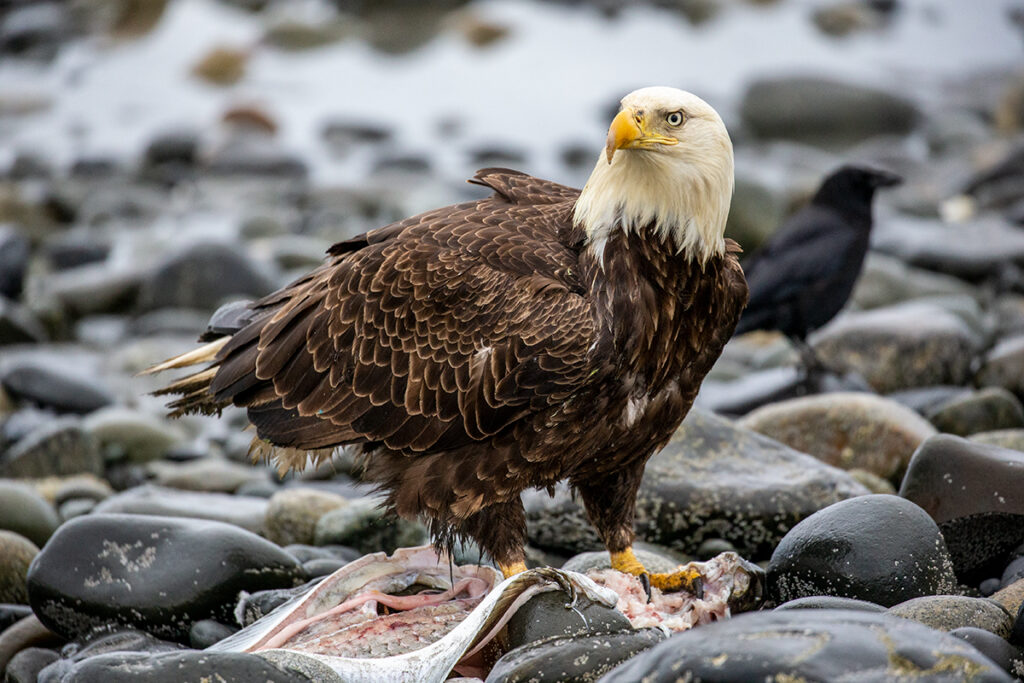
If you’re an avid birdwatcher or captivated by the majesty of bald eagles, the Chilkat Bald Eagle Preserve is a must-visit. Situated near Haines in Southeast Alaska, this 48,000-acre preserve is a sanctuary for one of the world’s largest gatherings of bald eagles. The late salmon runs in the Chilkat River draw the eagles here, especially from October to February.
The prime time to witness this natural spectacle is during the Alaska Bald Eagle Festival, usually held in November. This is when you can see hundreds of eagles swooping down to catch salmon, offering unparalleled photo opportunities.
The preserve is accessible via a scenic drive from Haines, which is itself reachable by ferry from Juneau or Skagway. You can also opt for a guided tour that often includes transportation and the expertise of a local guide.
For accommodations, consider staying in Haines, where you’ll find a range of options from cozy bed and breakfasts to more upscale hotels like the Aspen Suites Hotel.
Tongass National Forest: A Rainforest Oasis for Wildlife Enthusiasts
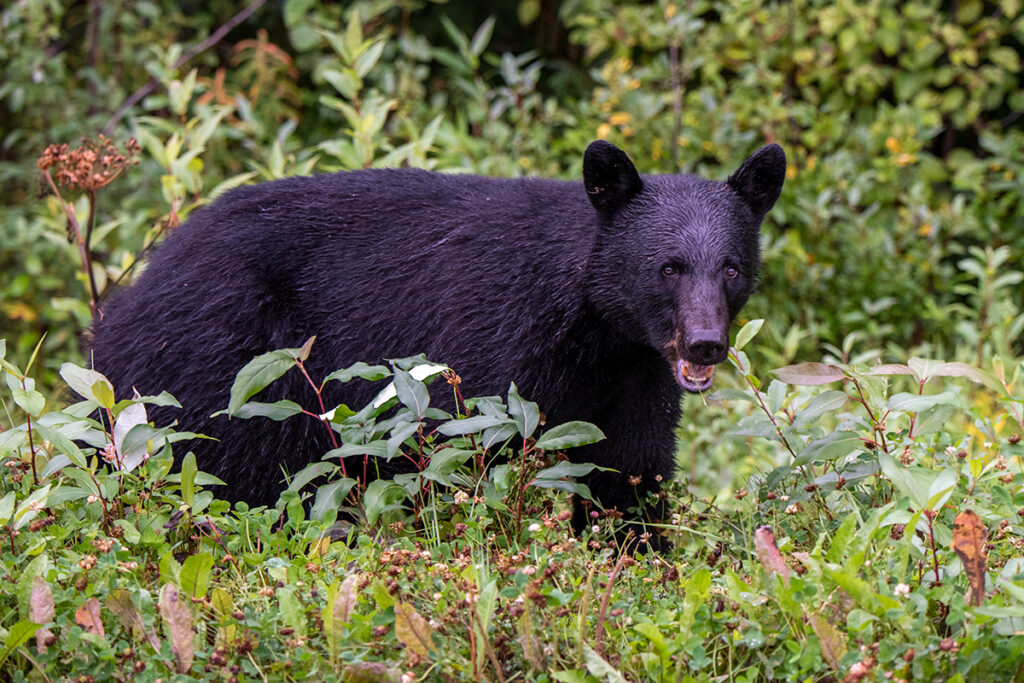
Don’t let the term “national park” limit your wildlife viewing options. The Tongass National Forest, covering a staggering 16.7 million acres, is the largest national forest in the United States and a biodiversity hotspot. The forest is teeming with wildlife, from black bears and Sitka black-tailed deer to bald eagles and humpback whales. It’s one of the best places to see wildlife in Alaska, and it’s easy to get there.
The prime time for wildlife spotting in Tongass is between May and September. The forest is lush during these months, and the animals are active. For whale watching, aim for June through August.
You can access Tongass National Forest via several gateway communities, including Juneau, Ketchikan, and Sitka. These towns are well-connected by air and sea, with Alaska Inside Passage cruises offering a scenic route to the forest.
The forest offers a variety of landscapes, from glaciers and mountains to old-growth rainforests. There are numerous hiking trails, and kayaking is a popular way to explore the fjords and inlets.
Consider the Aspen Suites Hotel in Sitka or The Landing Hotel in Ketchikan for a comfortable stay. Both offer easy access to the forest and are highly recommended.
Arctic National Wildlife Refuge: A Remote Wilderness Experience
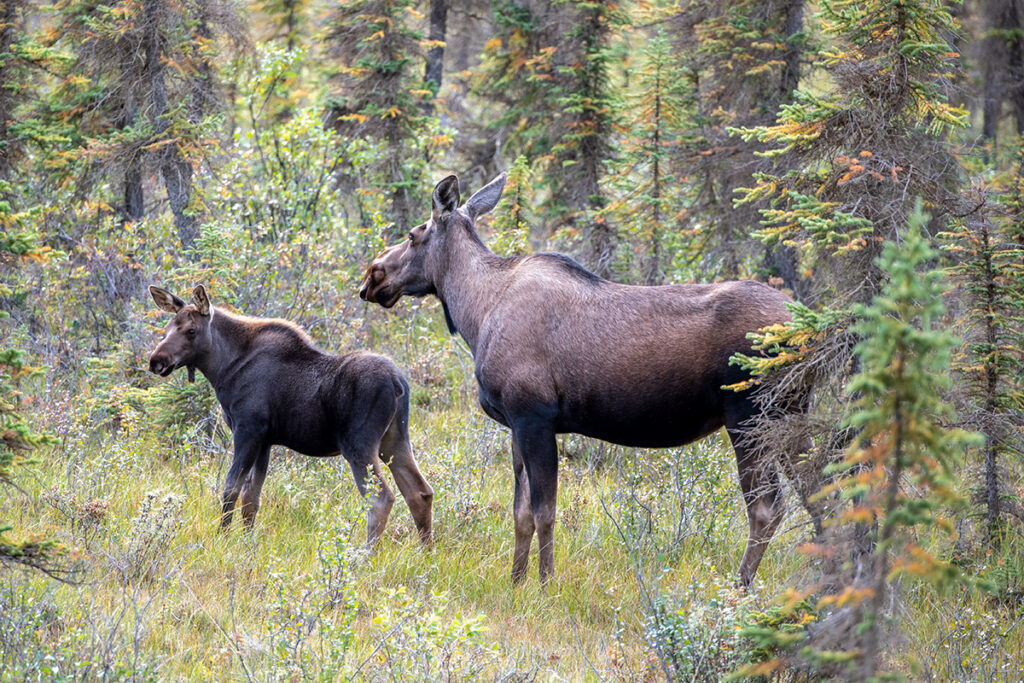
If you’re yearning for an off-the-beaten-path Alaska wildlife experience, look no further than the Arctic National Wildlife Refuge. This sprawling 19.6-million-acre sanctuary in northeastern Alaska is one of the last untouched wilderness areas in the United States.
Not only is it a haven for the Porcupine caribou herd, Arctic foxes, and over 200 species of migratory birds, but it’s also one of the few places in Alaska where you can encounter polar bears in their natural habitat.
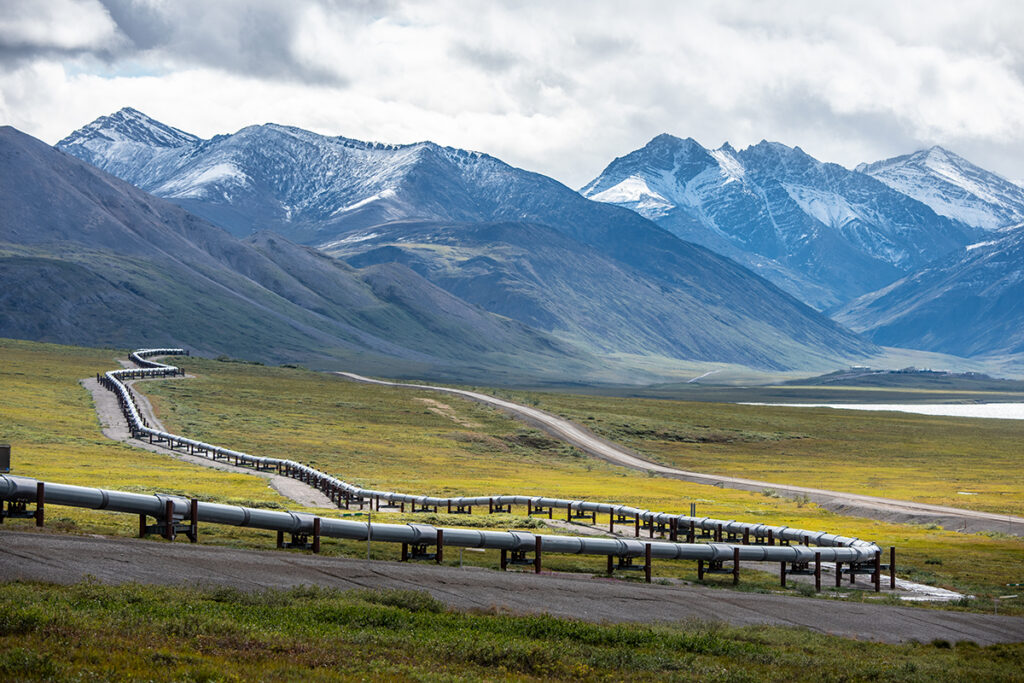
The brief Arctic summer, from late June to early September, is optimal for wildlife viewing. During these months, the tundra comes alive with blooming wildflowers, and animals are most active. For polar bear sightings, late fall is your best bet.
Reaching the Arctic National Wildlife Refuge is an adventure in itself. Most visitors fly into Fairbanks and then take a smaller aircraft to Arctic Village or Kaktovik. The refuge is also accessible via the Dalton Highway if you drive towards the Arctic Ocean via Prudhoe Bay. Or you can combine a trip with visiting the Gates of the Arctic National Park.
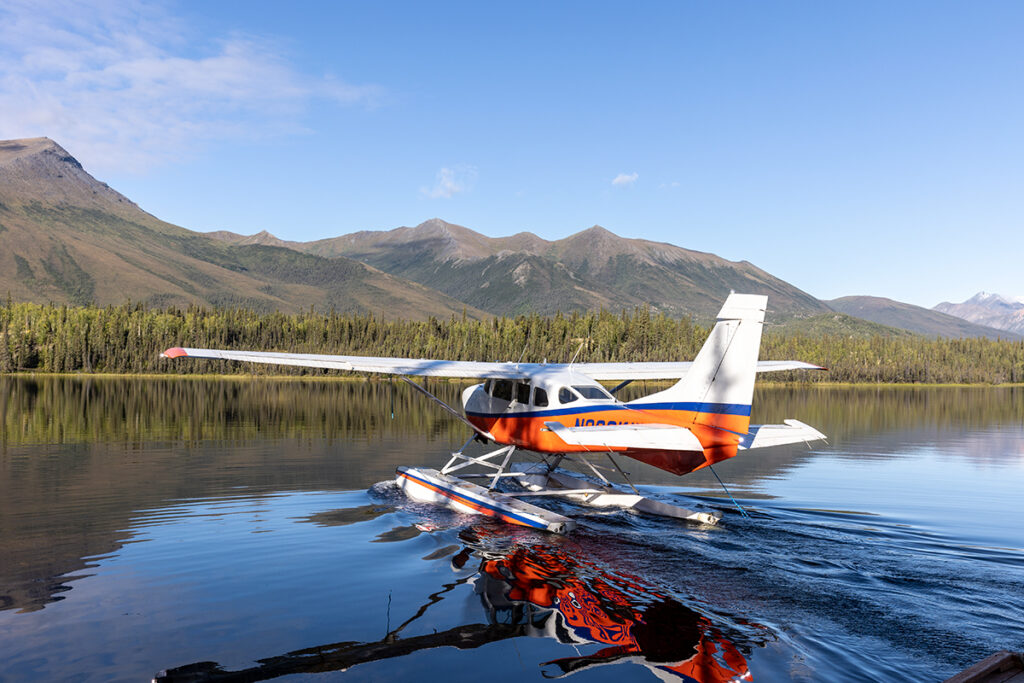
Prepare for extreme weather conditions, even in summer. Also, given the refuge’s remote location, amenities are scarce. Packaging all essentials, including food, water, and camping gear, is crucial if you plan to stay overnight.
Accommodations are limited to small lodges and campsites, so booking well in advance is advisable. The Arctic Getaway Cabin and Breakfast in Wiseman offers a cozy, rustic experience and is popular among visitors.
Tips for Responsible Wildlife Viewing in Alaska
When it comes to experiencing the natural wonders of Alaska, it’s crucial to do so responsibly. After all, our actions can have a lasting impact on the delicate ecosystems and incredible wildlife that call this state home. Here are some tips to ensure your wildlife viewing is as ethical as it is memorable, especially if you’re visiting some of the best places to see wildlife in Alaska.
- Keep a Safe Distance: Always maintain a respectful distance from animals. A good rule for most wildlife is to stay at least 100 yards away. Aim for a distance of at least 25 yards for smaller animals and birds.
- Use Binoculars and Zoom Lenses: Invest in a quality pair of binoculars or a camera with a zoom lens. This allows you to observe animals closely without disturbing their natural behaviors.
- Stay Quiet and Calm: Loud noises and sudden movements can stress animals and disrupt their natural activities. Speak softly and move slowly to minimize your impact.
- Stick to Designated Paths: Wandering off the beaten path can harm sensitive habitats. Always stay on marked trails and roads, and follow any posted signs or guidelines.
- Don’t Feed the Wildlife: Feeding animals might seem like a kind gesture, but it can lead to poor nutrition and make them dependent on human interaction.
- Leave No Trace: Pack out all trash and leave natural and cultural features as you found them. The Leave No Trace principles are a good set of guidelines to follow.
- Educate Yourself and Others: Before you go, learn about the wildlife you’ll likely encounter and how to view them safely. Share this knowledge with others, both during and after your trip.
- Choose Ethical Tour Operators: If you opt for a guided tour, choose operators committed to responsible wildlife viewing and conservation efforts.
By following these tips, you’ll enhance your experience and contribute to the well-being of Alaska’s incredible wildlife. Responsible wildlife viewing ensures that future generations can enjoy the same breathtaking encounters.
Best Time for Wildlife Viewing in Alaska
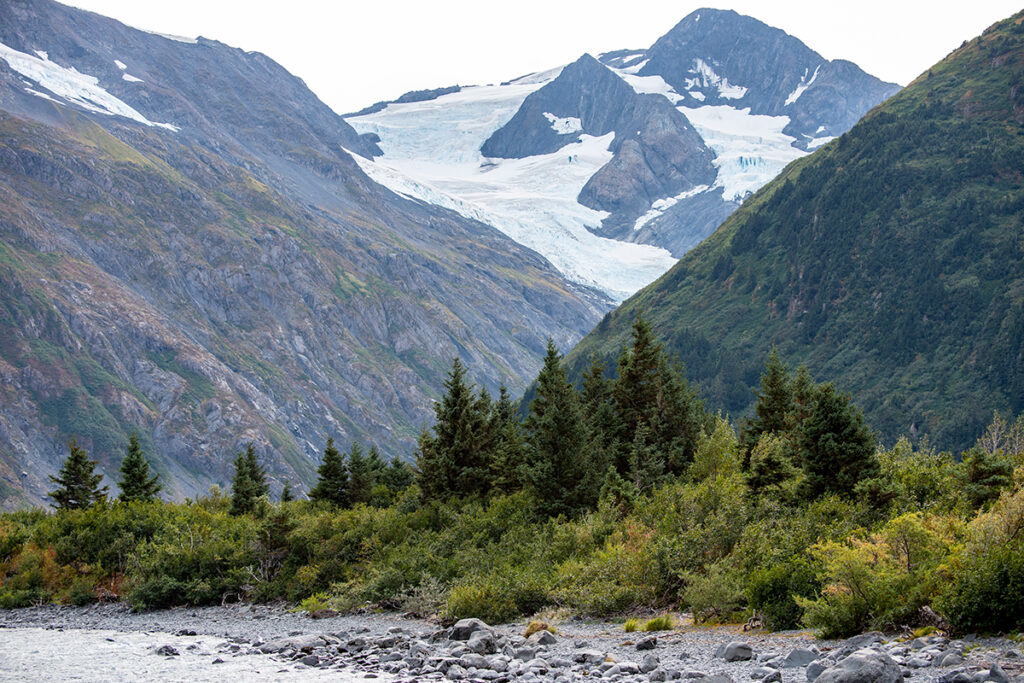
Timing is everything, especially when it comes to wildlife viewing in Alaska. So, when should you pack your bags and head north? Let’s break it down.
Spring (April to June): As Alaska shakes off its winter chill, animals start to become more active. This is a fantastic time to see brown bears emerge from hibernation. Plus, migratory birds like the Arctic Tern begin to arrive.
Summer (June to August): Ah, the Alaskan summer—long days and mild temperatures make this the peak tourist season. It’s also prime time for spotting a variety of wildlife. Think moose munching on fresh vegetation and bald eagles soaring under the midnight sun. If you’re into marine life, this is the best time for whale watching.
Fall (September to November): As the leaves change color, so do the opportunities for wildlife viewing. Caribou begin their impressive migrations, and it’s also a good time to spot moose during their rutting season. But keep in mind, the weather starts to get a bit unpredictable.
Winter (December to March): While it’s the off-season for tourists, it’s a magical time for those who brave the cold. You’ll have the chance to see the Northern Lights. In winter, the bald eagles congregate at the Chilkat Bald Eagle Preserve.
The Best Places To See Wildlife in Alaska – Conclusion
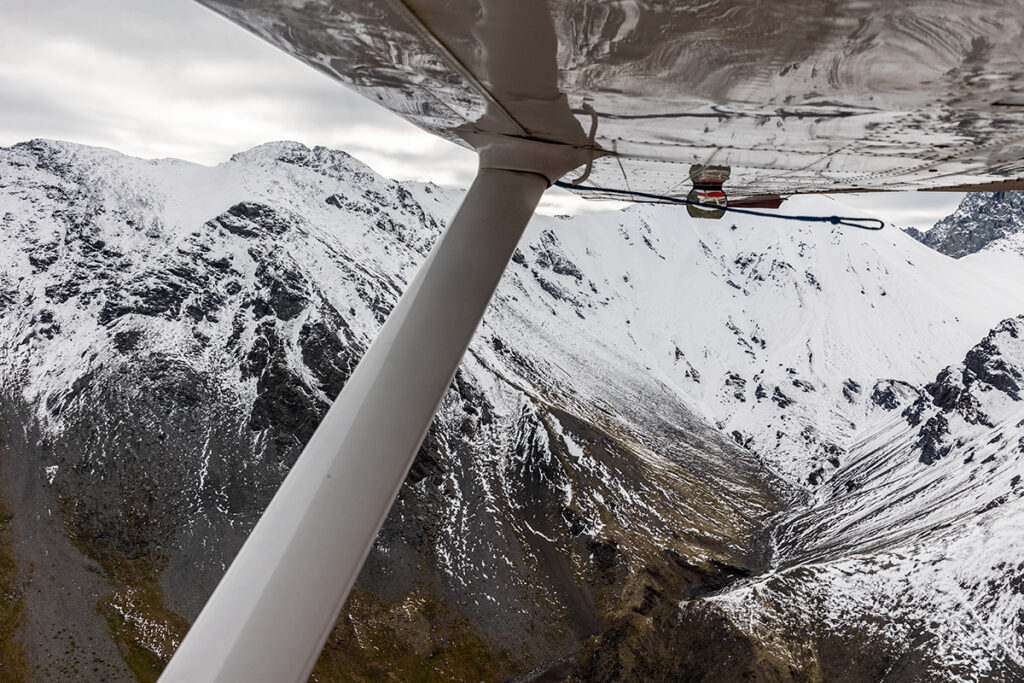
So, what’s the verdict? Where should you go to see Alaska’s most iconic animals? Here are our top recommendations based on our own experiences:
- Best for Bear Viewing: If you’re after bears, make a beeline for Katmai National Park and Lake Clark National Park. These parks offer some of the most intimate bear-watching experiences you can hope for.
- Best for Whale Watching: Alaska’s capital – Juneau, and Kenai Fjords National Park are your go-to destinations for those eager to see the giants of the sea. The waters here are teeming with humpback whales, orcas, and more.
- Best for Moose, Dall Sheep, and Grizzly Bears: Denali National Park is a wildlife enthusiast’s dream and a perfect spot for first-time visitors. Denali has everything from moose grazing near water bodies to Dall sheep navigating steep terrains.
- Best for Bald Eagles: If the majestic bald eagle is what you’re hoping to capture on your camera, don’t miss out on Homer and the Chilkat Bald Eagle Preserve. These spots are nothing short of an eagle-watcher’s paradise.
So, are you ready to experience the best places to see wildlife in Alaska featured in this guide? Which spots have piqued your interest for your upcoming adventure?
About the Author
Agnes Stabinska is a content writer, photographer, and co-owner of the Alaska Itinerary blog. She loves wildlife, landscape photography, and outdoor adventures in national parks across the US. Alaska is her favorite state.
More on Exploring Nature in North America
- How to Visit All 5 National Parks in Utah on One Trip
- Top National Parks in New Mexico to Fall in Love with in 2023
- 10 Best Destinations to See Wildlife in Alaska
- Guide to the Best Hikes in Grand Teton National Park
- 6 Amazing National Parks in Florida You Have to Visit
- 24 Stunning Canyons in the US to Add to Your Bucket List
- 7 Best Places to See Wildlife in Yellowstone National Park
- 7 Top Nature Adventures in Santa Barbara, CA
- 26 Glacier Cruise in Alaska – Tour Review
- Things To Do in Nantucket: Nature and Wildlife

